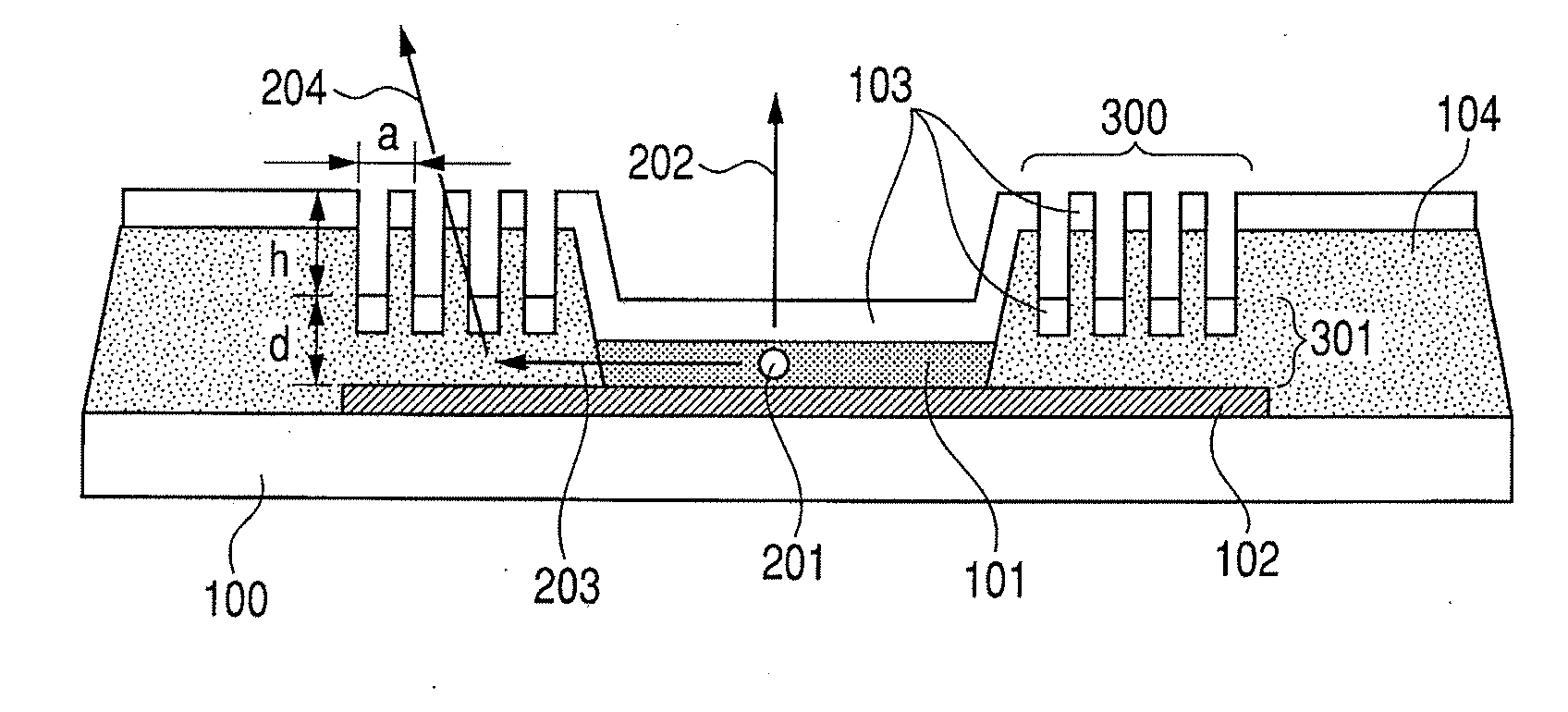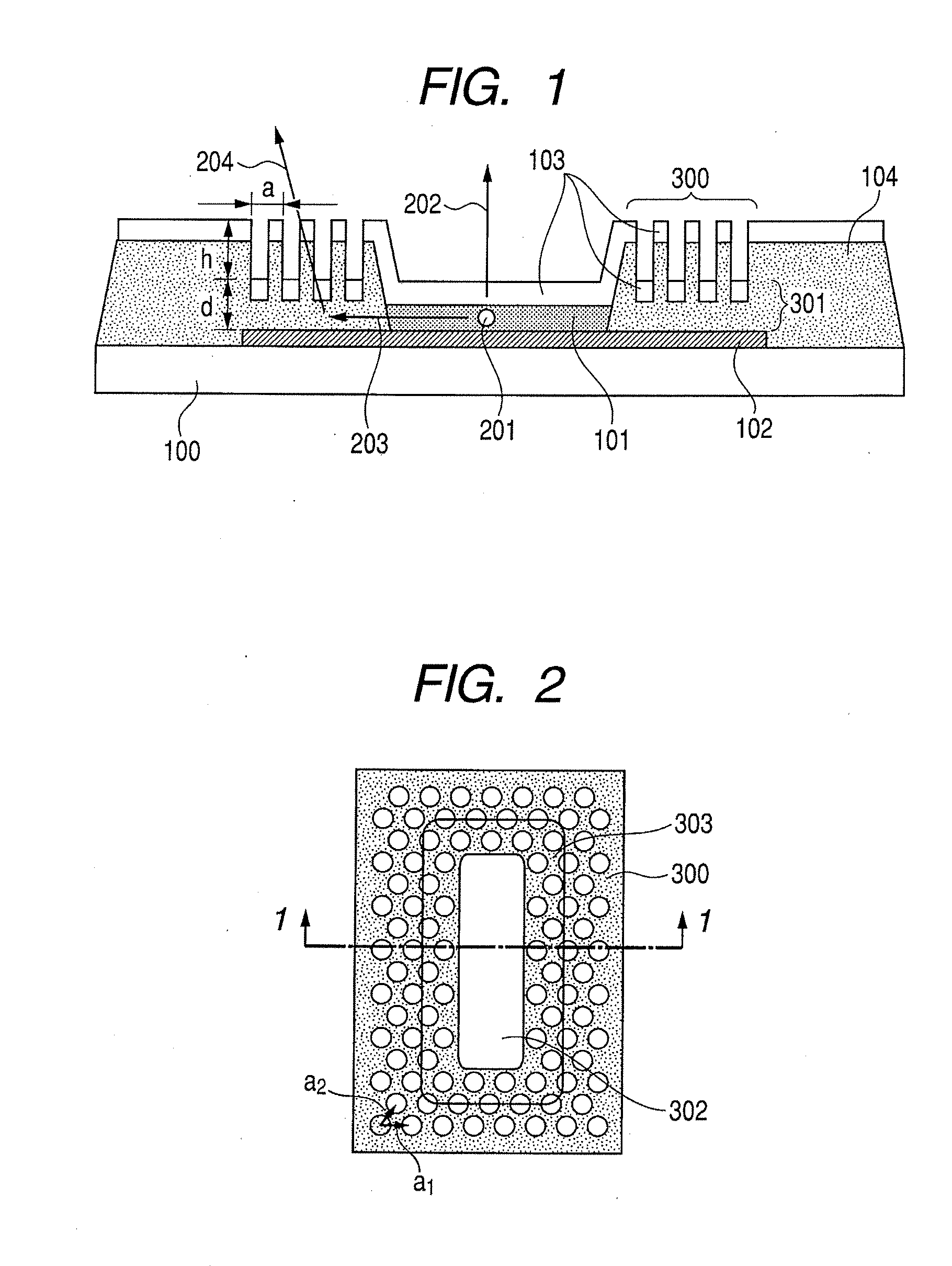Light-emitting apparatus
a technology of light-emitting apparatus and discharge tube, which is applied in the direction of discharge tube/lamp details, discharge tube luminescnet screen, organic semiconductor device, etc., can solve the problems of degrading the durability of the device, degrading the device characteristics and the device durability, and affecting so as to improve the efficiency of light extraction
- Summary
- Abstract
- Description
- Claims
- Application Information
AI Technical Summary
Benefits of technology
Problems solved by technology
Method used
Image
Examples
example 1
[0106]A full-color organic light-emitting apparatus of a structure illustrated in FIG. 13 is produced by the method described below. More specifically, the light-emitting apparatus of this example is an organic light-emitting apparatus having a plurality of pixels, each pixel being composed of a red-light-emitting device, a green-light-emitting device, and a blue-light-emitting device (i.e., sub-pixels of three colors of red, green, and blue), and can be applied preferably as a display apparatus. Hereinafter, the red-light-emitting device is referred to as an R device, the green-light-emitting device is referred to as a G device, and the blue-light-emitting device is referred to as a B device.
[0107]First, a TFT driving circuit made of low-temperature polysilicon is formed on a glass substrate 100 as a support member, and a planarizing film made of an acrylic resin is formed on the TFT driving circuit to obtain a substrate. A film of an Ag alloy (AgPdCu) as a reflective metal is form...
example 2
[0117]FIG. 14 is a structural view of an organic EL light-emitting apparatus of Example 2. The production process of Example 2 is the same as Example 1 before the formation of the hole-transporting layer. In each sub-pixel, a film of Compound (I) above is formed as a hole-transporting layer of an R device in a thickness of 70 nm, as a hole-transporting layer of a G device in a thickness of 40 nm, and as a hole-transporting layer of a B device in a thickness of 20 nm, respectively. Next, as a common 3-color stack type white (W) emission layer, CBP and bis[(4,6-difluorophenyl)pyridinato-N,C2] (picolinato)Iridium (hereinafter, referred to as FIrpic) are co-deposited in a thickness of 25 nm. Then, CBP and Btp2Ir(acac) (weight ratio 92:8) are co-deposited in a thickness of 2 nm. Further, CBP and bis(2-phenylbenzothiozolato-N—C2)Iridium(acetylacetonate) (hereinafter, referred to as Bt2Ir(acac) (weight ratio is 92:8) are co-deposited in a thickness of 2 nm, thereby obtaining a stack struct...
example 3
[0119]FIG. 15 is a structural view of an organic light-emitting apparatus of Example 3. The process for the formation of the layers up to and including the electron injection layer is the same as that of Example 1. The substrate having the layers up to and including the electron injection layer formed thereon is moved to a sputtering apparatus without breaking the vacuum, and a film of an Ag alloy is formed to have a thickness of 20 nm as a metal semi-transparent electrode 193.
[0120]Further, a desiccant is disposed at the periphery of the light-emitting apparatus, and the apparatus is sealed with etched cap glass, whereby an organic light-emitting apparatus is obtained.
[0121]More specifically, the organic light-emitting apparatus of this example has a structure in which an organic layer 111 of an R device, an organic layer 121 of a G device, and an organic layer 131 of a B device are formed in each sub-pixel, and has a metal semi-transparent electrode.
PUM
 Login to View More
Login to View More Abstract
Description
Claims
Application Information
 Login to View More
Login to View More - R&D
- Intellectual Property
- Life Sciences
- Materials
- Tech Scout
- Unparalleled Data Quality
- Higher Quality Content
- 60% Fewer Hallucinations
Browse by: Latest US Patents, China's latest patents, Technical Efficacy Thesaurus, Application Domain, Technology Topic, Popular Technical Reports.
© 2025 PatSnap. All rights reserved.Legal|Privacy policy|Modern Slavery Act Transparency Statement|Sitemap|About US| Contact US: help@patsnap.com



